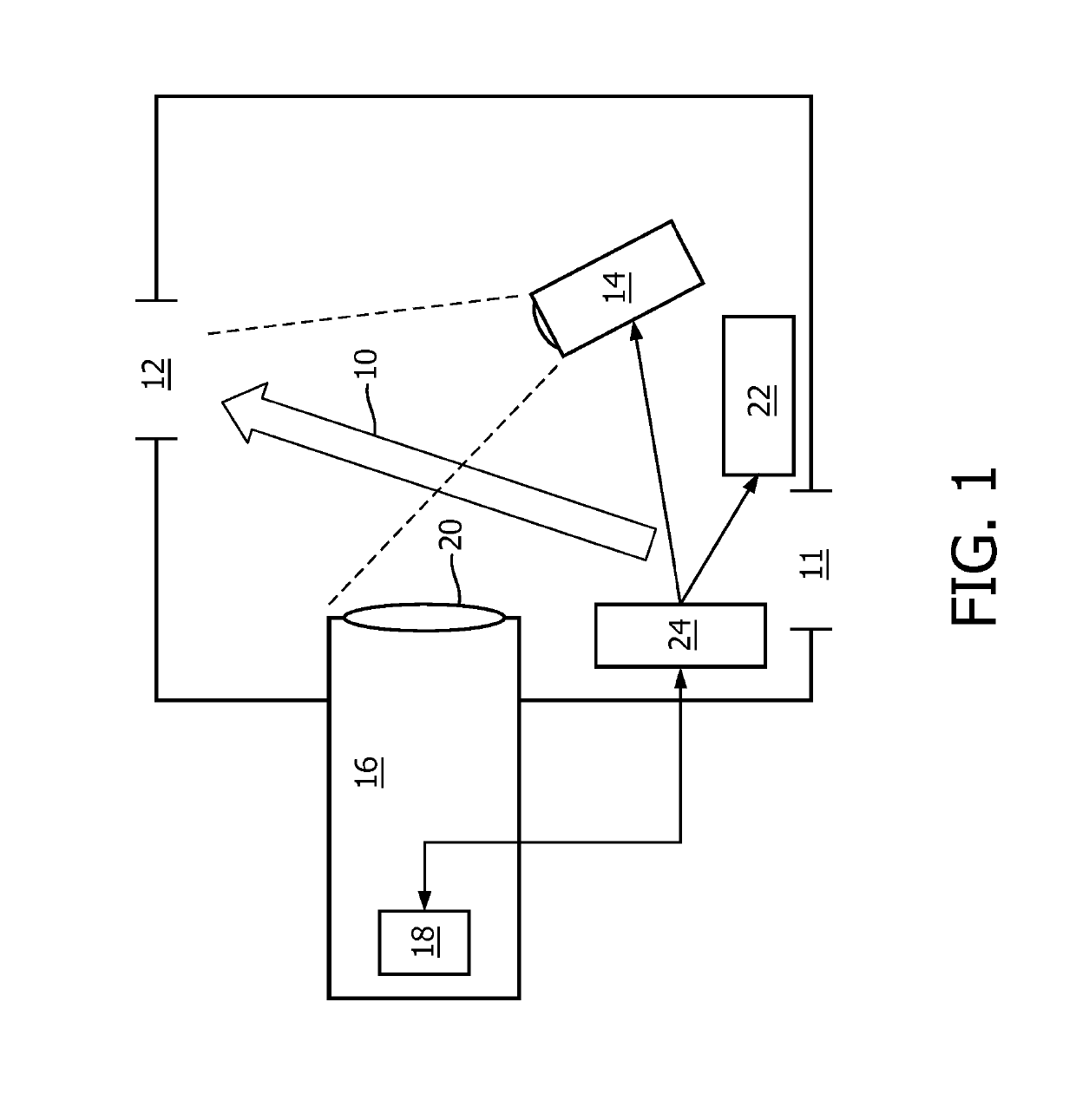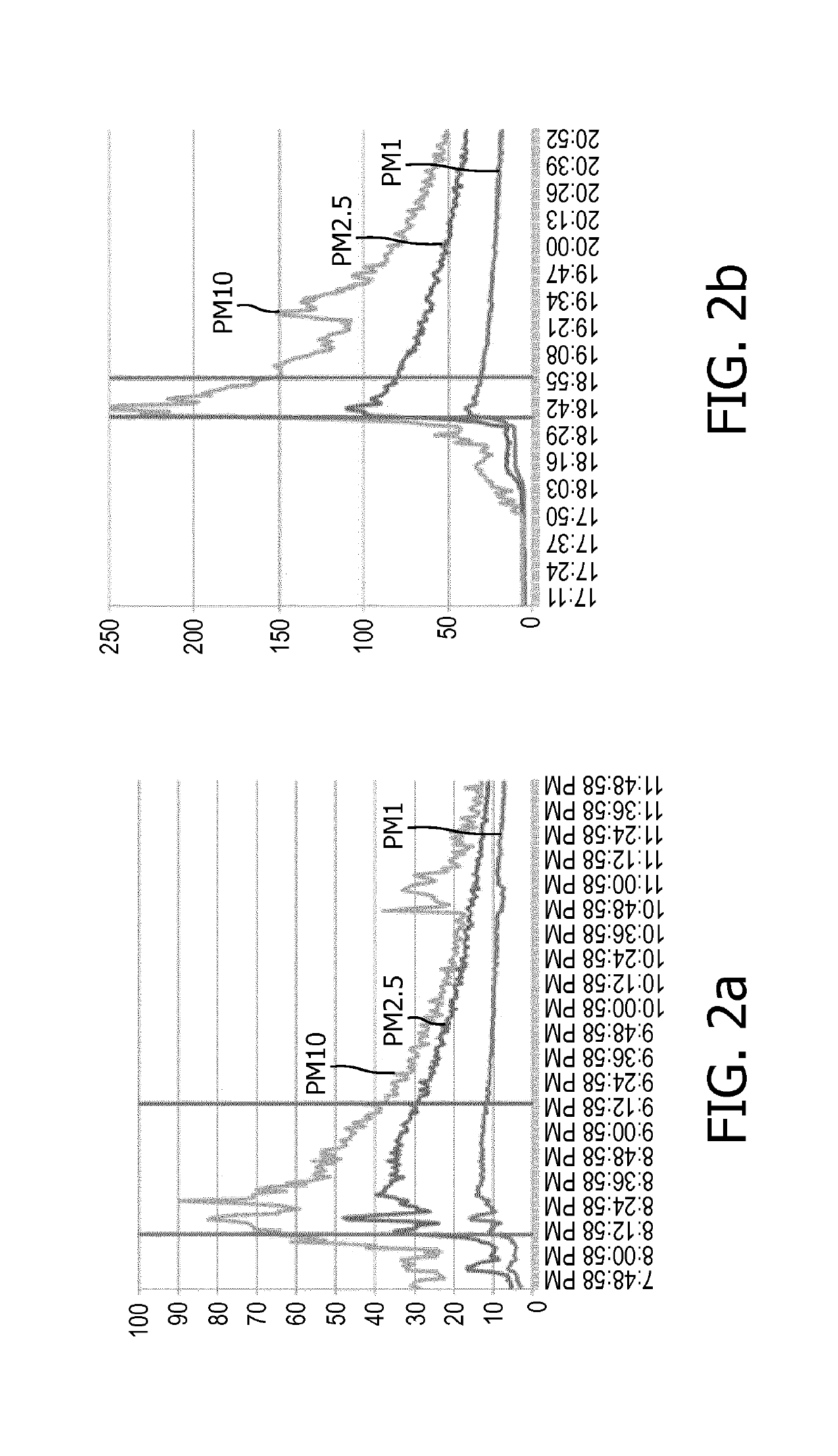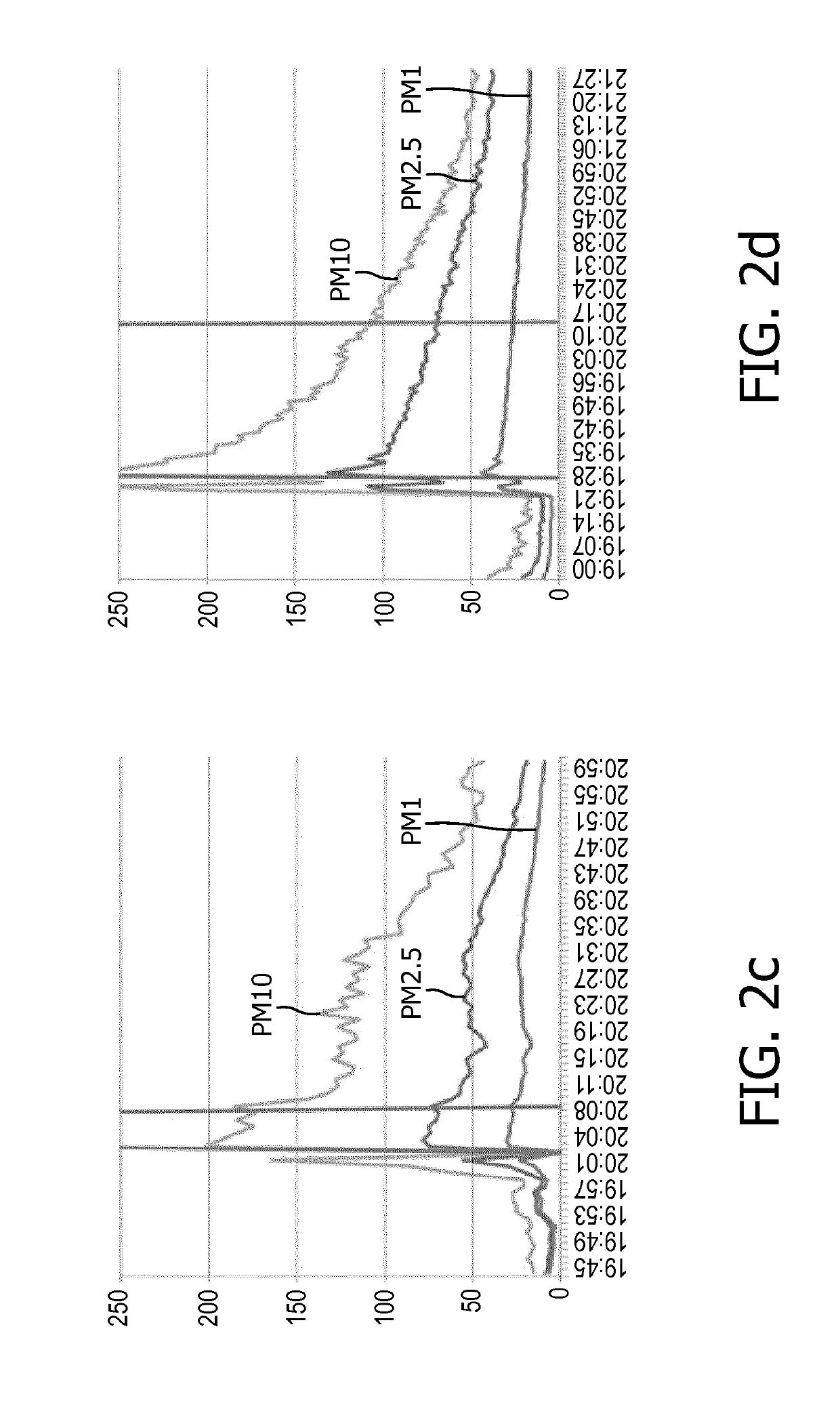Optical particle sensor and sensing method
a technology of optical sensors and sensing methods, applied in the direction of instruments, porous material analysis, investigating moving fluids/granular solids, etc., can solve the problems of low cost optical sensors, usually only sensitive, and conversion usually deviating from reality
- Summary
- Abstract
- Description
- Claims
- Application Information
AI Technical Summary
Benefits of technology
Problems solved by technology
Method used
Image
Examples
Embodiment Construction
[0057]The invention provides an optical particle sensor in which at least first and second threshold settings are applied to an optical sensor or sensor signal to obtain first and second optical sensor readings. They are processed to determine a parameter which is dependent on the type of pollution event. The parameter is used to determine from at least one of the first and second optical sensor readings a mass of all particles below a first particle size. In this way the mass of all particles below a desired size can be evaluated, even though the optical sensor may not be responsive to the smallest particles.
[0058]FIG. 1 shows an example of an optical sensor to which the invention may be applied. There is a gas flow 10 from an inlet 11 to an outlet 12 of the overall sensor device. An infrared LED 14 (λ=890 nm) is used to illuminate the gas flow to enable optical detection of entrained particles based on optical measurements of scattering. The LED is to one side of the detection vol...
PUM
| Property | Measurement | Unit |
|---|---|---|
| size | aaaaa | aaaaa |
| particle size | aaaaa | aaaaa |
| threshold | aaaaa | aaaaa |
Abstract
Description
Claims
Application Information
 Login to View More
Login to View More - R&D
- Intellectual Property
- Life Sciences
- Materials
- Tech Scout
- Unparalleled Data Quality
- Higher Quality Content
- 60% Fewer Hallucinations
Browse by: Latest US Patents, China's latest patents, Technical Efficacy Thesaurus, Application Domain, Technology Topic, Popular Technical Reports.
© 2025 PatSnap. All rights reserved.Legal|Privacy policy|Modern Slavery Act Transparency Statement|Sitemap|About US| Contact US: help@patsnap.com



